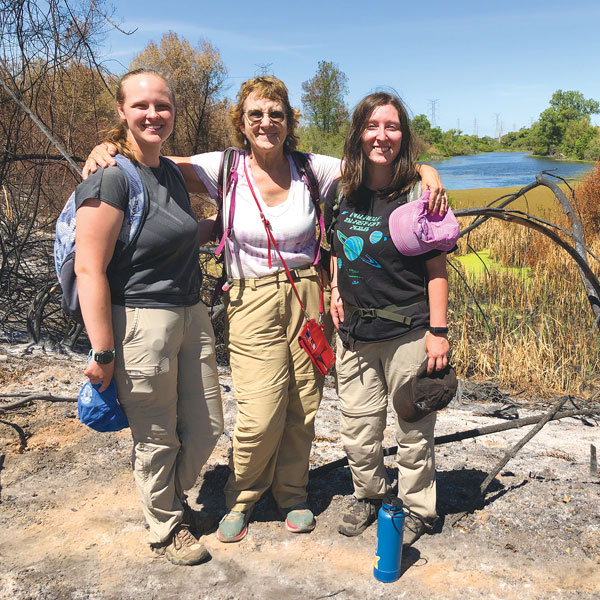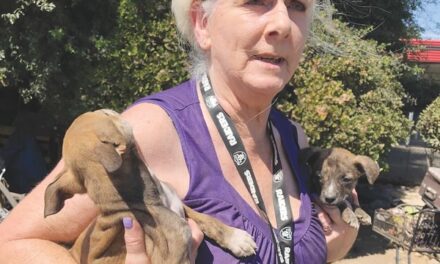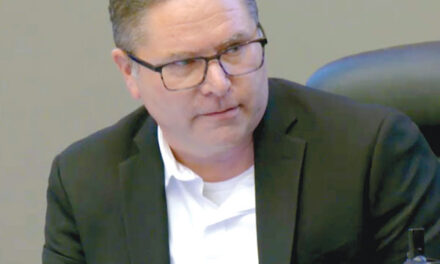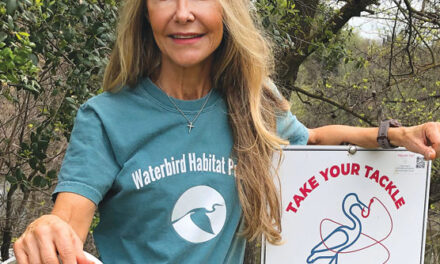Saving Bushy Lake
Sac State professor leads restoration, preservation efforts
By Cathryn Rakich
August 2021
Scattered patches of smoldering ash emit wisps of grey smoke—10 days after the fire. The once verdant flora is now black. The air hints of scorched grass underfoot.
“These hot spots are not out. I worry about what’s going to happen,” says Dr. Michelle Stevens, professor of environmental studies at Sac State. “Just let it all burn? Will we have nothing left?”
Bushy Lake, 20 acres of riparian landscape and wetland, located behind Cal Expo along the lower American River Parkway, has burned three times in recent years—2014, 2017 and this past June.

Under a collaborative effort between Sac State and Sacramento County Parks Department, Stevens has led herculean efforts over the past five years to restore and protect Bushy Lake’s fragile habitat.
Stevens and her students plant fire- and drought-resistant native grasses, pull invasive weeds, and clear trash from homeless camps and other human activities, while monitoring and researching the abundant wildlife.
Thanks to such work, the Environmental Council of Sacramento named Stevens 2021 Environmentalist of the Year. In addition to grants and other funding, the Bushy Lake Restoration Project recently received $350,000 from the California Wildlife Conservation Board.
The professor and several students were surveying turtle nesting sites at Bushy Lake the morning of June 6. “All the turtles are nesting right now, so we’ve been out every day,” Stevens says.
The team left around 1 p.m. At approximately 2 p.m., the wildfire ignited, presumably at a homeless encampment. The flames engulfed 6 acres, through the entire restoration project up to the shore. But unlike the 2017 blaze, there was no effort by fire crews to stop this year’s burn, Stevens laments.
“I was hoping against hope that this area would have been spared, but it was far worse than I could have imagined.” When the 2017 wildfire hit, “the fire department held a line on the southern road so the fire didn’t get to our restoration plantings,” she says.
Now Stevens is calling for a fire plan—clear guidance, adhered to by all public agencies, to protect the land. “This is one of the most important natural resources on the whole river,” she says. The area is protected under the Bushy Lake Protection Act, enacted into law in 1976 and expanded in 2009.
Bushy Lake is home to an array of wildlife, including beavers, river otters, opossums, skunk, deer, coyote, jack rabbits and other mammals, as well as more than 160 bird species and approximately 50 types of butterflies and other pollinators.
Despite the fire, Stevens and her students continue their restoration efforts and research on turtles. There are hundreds of turtles in Bushy Lake. Unfortunately, most are non-native, such as the red-eared slider, released by well-meaning people who get them as pets.
“You see why people love them—they’re cool, they’re pretty,” Stevens says. “But they get big and live 30 to 40 years. People think they’re doing good to let them go in the wild. They don’t realize those turtles displace the native turtles.”
The red-eared slider competes for food and basking sites with the native western pond turtle, listed as a “species of special concern” in California and endangered in other western states.
To learn more about the reptiles, once a month Stevens’ team places traps, baited with halibut, in Bushy Lake and returns the next day. The caught turtles are measured, weighed, marked and released.
“Ultimately, we’ll probably re-home some of the non-native turtles,” says Madeleine Sierra, a Sac State student and research assistant. They are searching for herpetological societies to take them. “Or responsible pet owners who are not going to release them back into the wild.”
“This is critical habitat for native western pond turtles,” adds Alexandra von Ehrenkrook, who graduated from Sac State last year and is continuing as a research assistant. “We’re trying to do nesting surveys every day until July 1. That’s usually when they stop nesting.”
Since May, the team has flagged about 30 nests. Thankfully, some are in vegetation spared by the June wildfire. “But we haven’t seen much since the fire,” Sierra says. “They won’t nest in the ash,” Stevens adds. “If they did, the eggs wouldn’t survive.”
“It’s very emotional for us,” Sierra says. “I’ve poured the last six months of my life into it—coming out here almost every single day. It’s hard seeing it like this. But it will come back.
“A goal going forward is to get funding to plant more native species. Because that’s where it starts—having a good foundation so our native wildlife can come back and thrive.”
Beginning in January, when the rains come, the public is invited to join in the re-planting efforts. For more information, visit bushylake.com.
Cathryn Rakich can be reached at crakich@surewest.net. Follow us on Facebook, Twitter and Instagram: @insidesacramento.















